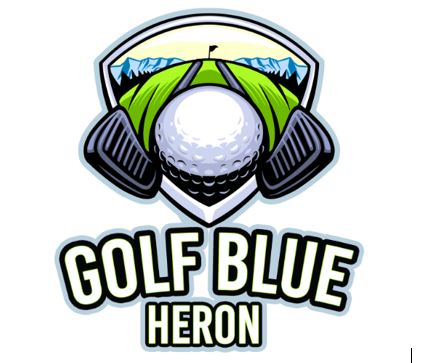Low Spin Vs High Spin Irons – What’s Best For Your Game?
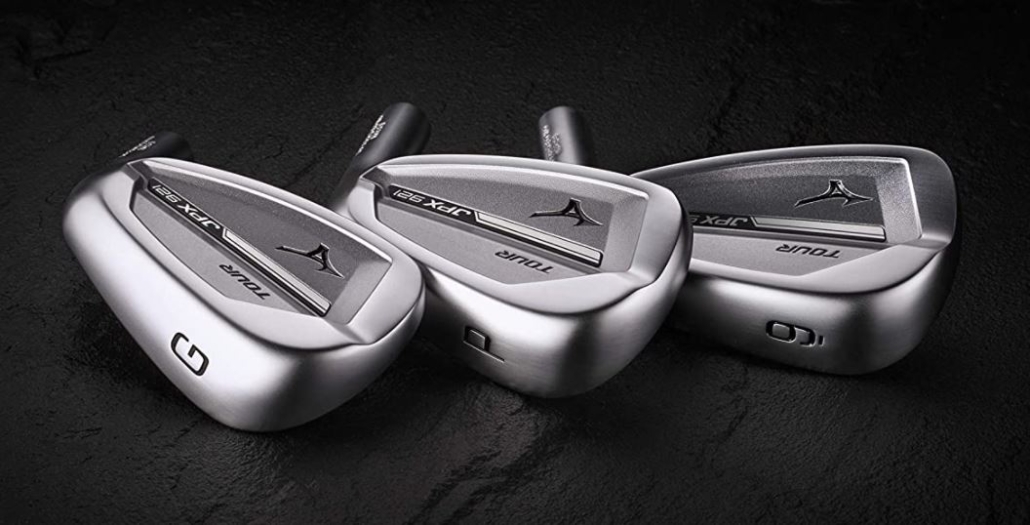
How often do you assess your spin rate with your irons to determine if you are maximizing your distance and spin? The answer for the majority of average golfers is never, and that needs to change.
For starters, read this post on the pros and cons of low spin vs high spin irons.
I will highlight the features of each type of iron to help you decide which setup works best for your swing. By the end of this article, you will be able to make better-informed decisions when it comes to selecting your next set of irons.
Intro To Spin Rates And Golf Irons
The team at Trackman suggests that spin rate refers to the quantity of spin that you generate after impact. The more spin that you generate, the higher your ball is likely to fly. Conversely, less spin results in a lower trajectory.
Moving from spin to irons. Golf coach Mark Crossfield suggests that cavity backs produce less spin than blades. As a result of the lower CG in the former.
High Spin Vs Low Spin Irons Overview
It doesn’t take a rocket scientist to figure out what each of these irons does, but let’s take at the finer details.
High spin irons naturally promote increased backspin and sidespin rpm. As a result, it is better for shaping your shots and landing the ball softly on the green.
These are features that are closely associated with blade irons used by superior golfers.
What Exactly Are High Spin Irons?
As I mentioned above, high spin irons promote additional spin rpm off the face, which is enjoyed by lower handicappers.
Increased backspin RPM optimizes the carry of your ball and equips it with shot-stopping power to sit rapidly. And, sidespin promotes maximum shot shape.
What Are The Pros And Cons

Pros
Carry Distance
The beauty of irons that generate additional backspin is that it causes your ball to stay in the air for longer.
When you combine this with the aerodynamic construction of your ball, it glides through the air further than irons with less backspin RPM.
Distance Control
When you launch your irons shots high into the air, the ball descends at a steep angle, causing it to stop quickly.
That is ideal for golfers looking to optimize their distance control by understanding exactly how far they can hit each club, including roll.
Greenside Spin
Although we crave distance from all our other clubs, spin is especially vital around the greens.
Optimal spin enables us to attack flags and put our balls close to increase the likelihood of an up-and-down. High spin irons and wedges excel in this department by delivering optimal backspin rpm.
Workability
Another factor that superior golfers desire is workability.
If you want to score low, you need to know how to induce a draw or a fade. Thanks to the sidespin that these irons provide, it is easier to shape your iron shots.
Cons
Roll
Thanks to the higher ball flight that these irons deliver, you lose out on roll.
When the ball hits the ground, it stops rapidly. Therefore you lose a few yards if you are trying to run your ball up to the flag.
Apex
If you are like Zach Johnson and naturally launch the ball at a higher angle, irons like these could cause you to balloon your shots and lose yardage.
Forgiveness
Following Crossfield’s suggestion that most high spin irons are blades, we can deduce that they offer minimal forgiveness.
As a result, they typically don’t suit mid to high handicappers or those with inferior ball-striking capabilities.
Who Should be Using Them?
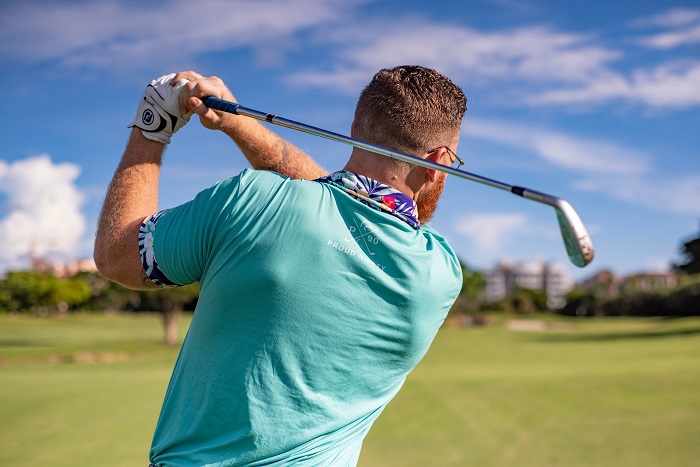
Based on our research and testing, golf irons that produce high spin are best left to low handicappers who can handle limited forgiveness. In exchange for optimal workability, of course.
What Exactly Are Low Spin Irons?
Contrary to high spin irons, these clubs reduce your backspin and sidespin RPM to deliver straighter shots.
The reduced backspin promotes increased roll, while limited sidespin combats slices and hooks.
In this video, Mark Crossfield explains that your game-improvement cavity back’s best represents low-spin irons.
What Are The Pros And Cons

Pros
Straighter Shots
Irons that produce limited spin help you to hit straighter irons shots, improving your accuracy.
As a result, you lower your risk of slicing or hooking your shot.
Increased Roll
The advantage of low spin irons is their ability to produce forward momentum, delivering increased roll upon landing.
That is beneficial if you are hitting a long iron off the tee and need extra yards. It also assists on long approach shots where you need your ball to run up to the flagstick.
Forgiveness
Since many low spin irons are cavity backs, they tend to provide increased forgiveness compared to blades.
Therefore, you enjoy straighter, consistent shots, even on off-center strikes.
Wind
The final advantage of low spin golf irons is their performance in windy conditions.
The natural lower launch of these irons enables them to navigate gale force conditions and gain extra distance on the roll.
Cons
Launch
When you generate optimal backspin, it is easier to launch your ball in the air and gain maximum carry distance.
Low spin irons do not possess this luxury, as the modest spin rate promotes a lower launch. That makes it challenging for some golfers to consistently launch their irons.
Shot Stopping
While the extra roll is welcomed for distance, it is your worst enemy when trying to stop a ball quickly on the green. The lack of spin can cause your ball to hit the deck and run over the green, leaving you to get up and down.
Who Should be Using Them?
From my experience, I suggest mid to high handicappers should use low spin irons. The reasons are because they promote straighter shots and combat strikes higher in the face.
Best High Spin Irons – Mizuno JPX 921 Tour
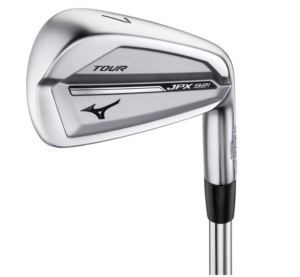
The Mizuno JPX 921 irons are renowned as the most popular irons on the PGA Tour among non-contracted professionals.
Mizuno forged these irons at their base in Hiroshima to offer superior golfers exceptional feel. Although these irons are expertly forged, they feature a thick cavity pad that absorbs vibrations and provides crisp acoustics on strikes out of the middle.
Furthermore, the shorter irons contain a narrow sole that optimizes turf interaction to ensure a cleaner strike from any lie. Plus, the irons are coated with a Pearl Brush finish that helps the clubface repel water and provides the added advantage of glare resistance.
Unlike traditional players irons, the Mizuno JPX 921 contains a Stability Frame that promotes straighter, higher ball flight in your long irons.
As you would expect from Mizuno, these irons are skillfully crafted to provide a superior feel, workability, and turf interaction. However, they offer limited forgiveness and are not suited to mid and higher handicappers.
Pros and Cons
Pros
- Superior feel
- Clean look
- Long irons produce a straighter, higher ball flight
- Short irons deliver enhanced turf interaction
- Glare resistant
Cons
- Limited forgiveness
- Not recommended to the average player
Overall Score: 94/100
Check Out More Reviews Here:
Best Mid Spin Irons – Cobra King Forged Tec
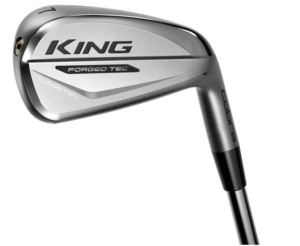
Our award for the best mid-spin irons goes to the high launching Cobra King Forged Tec’s. The compact shape gives it the appearance of a players iron, but it is packed with game-improvement features, such as rapid ball speed.
Cobra’s engineers employed tungsten weighting to place the CG behind the strike zone for optimal distance and accuracy on off-center strikes. Added to the ball speed and forgiveness are its exceptional feel and acoustics generated by the foam-infused core.
Finally, the standard grips on these irons are the Arccos Caddies that track data points from your swing and upload the information to the cloud. That helps you to analyze your performance to pinpoint the strengths and weaknesses of your swing.
Pros and Cons
Pros
- Expanded sweet spot
- Attractive looking irons
- Buttery soft feel
- Crisp acoustics
- Cobra connect grips allow you to track and analyze your swing
Cons
- Moderate forgiveness
- Not suitable for higher handicappers
Overall Score: 95/100
Check Out More Reviews Here:
Best Low Spin Irons – Callaway Mavrik Max

Finally, an iron set for the high handicap players in our game. The Callaway Mavrik Max’s top our list for the best low spin irons.
Callaway roped in Artificial Intelligence to optimize ball speed and spin-off the face. While tungsten weighting enabled them to precisely position the CG in each iron.
That helps you achieve a high launch and descent angle for a combination of distance and shot-stopping power.
Urethane microspheres were inserted to absorb vibrations experienced on mishits. These super-game improvement irons produce maximum forgiveness to help high-handicappers and beginners stay in play.
Pros and Cons
Pros
- High launch for optimal carry distance
- Delivers a steep descent angle for extra shot-stopping power
- Generates accelerated ball speed
- Forgiving
- Soft feel
Cons
- Oversize profile does not appeal to superior players
- Limited workability is not ideal for lower handicappers.
Overall Score: 94/100
Check Out More Reviews Here:
Conclusion On Low Spin vs High Spin Irons

That brings to a close our review on low spin vs high spin irons. We now know that low spin irons promote straighter shots and offer maximum forgiveness.
Whereas high spin irons enable optimal workability and control. However, they are the least forgiving of clubs.
Therefore, there is no clear winner of this test, as it depends on the player. High spin irons are the best option for low handicappers seeking workable irons. The high spin irons are your best option.
Those of you in this boat should take a close look at the Mizuno JPX 921’s.
Conversely, those of you who require extreme forgiveness and demand straight shots will extract value from the Callaway Mavrik Max irons.
